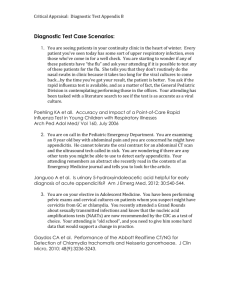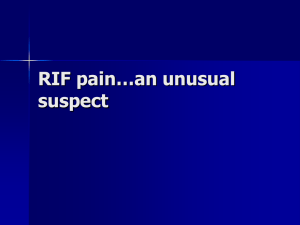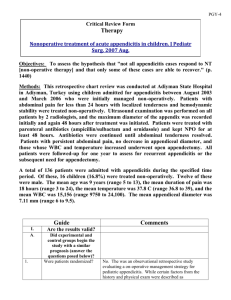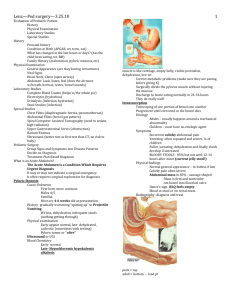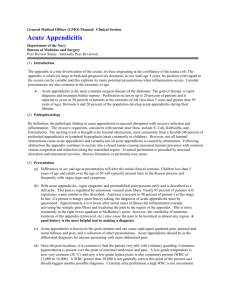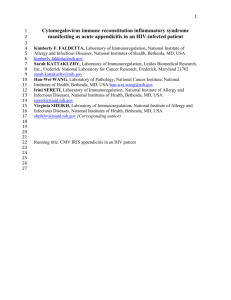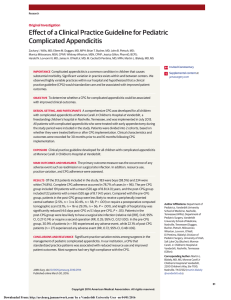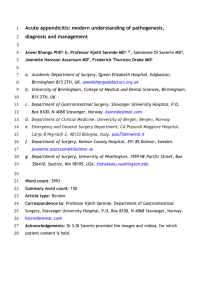PCSA-Abstract-2012
advertisement
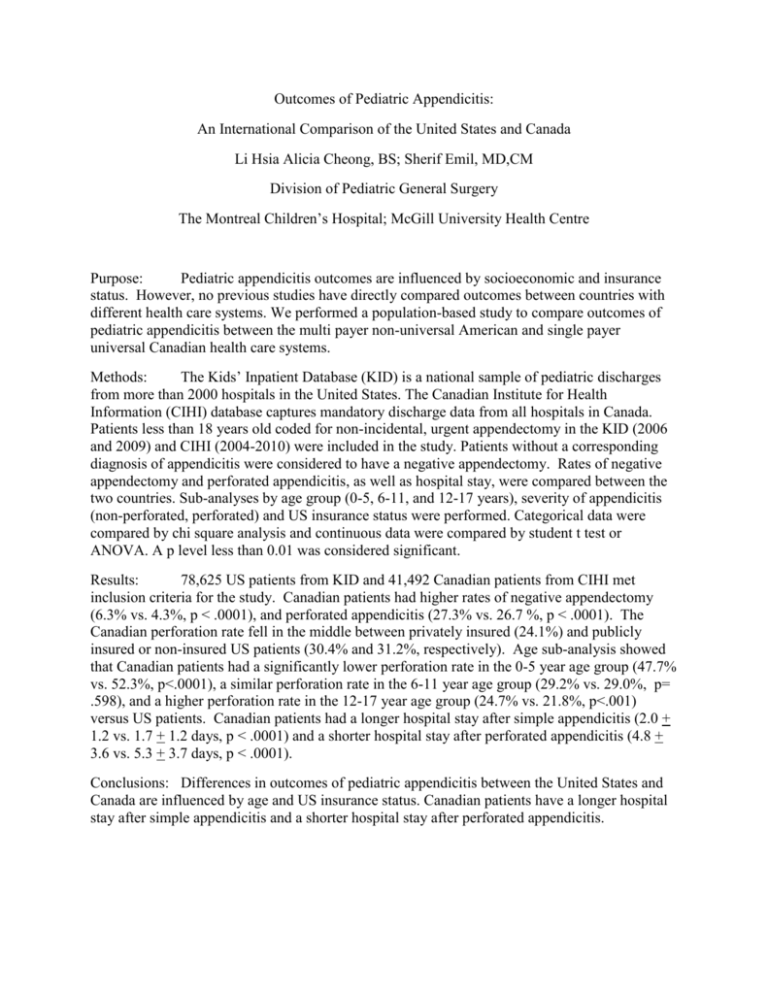
Outcomes of Pediatric Appendicitis: An International Comparison of the United States and Canada Li Hsia Alicia Cheong, BS; Sherif Emil, MD,CM Division of Pediatric General Surgery The Montreal Children’s Hospital; McGill University Health Centre Purpose: Pediatric appendicitis outcomes are influenced by socioeconomic and insurance status. However, no previous studies have directly compared outcomes between countries with different health care systems. We performed a population-based study to compare outcomes of pediatric appendicitis between the multi payer non-universal American and single payer universal Canadian health care systems. Methods: The Kids’ Inpatient Database (KID) is a national sample of pediatric discharges from more than 2000 hospitals in the United States. The Canadian Institute for Health Information (CIHI) database captures mandatory discharge data from all hospitals in Canada. Patients less than 18 years old coded for non-incidental, urgent appendectomy in the KID (2006 and 2009) and CIHI (2004-2010) were included in the study. Patients without a corresponding diagnosis of appendicitis were considered to have a negative appendectomy. Rates of negative appendectomy and perforated appendicitis, as well as hospital stay, were compared between the two countries. Sub-analyses by age group (0-5, 6-11, and 12-17 years), severity of appendicitis (non-perforated, perforated) and US insurance status were performed. Categorical data were compared by chi square analysis and continuous data were compared by student t test or ANOVA. A p level less than 0.01 was considered significant. Results: 78,625 US patients from KID and 41,492 Canadian patients from CIHI met inclusion criteria for the study. Canadian patients had higher rates of negative appendectomy (6.3% vs. 4.3%, p < .0001), and perforated appendicitis (27.3% vs. 26.7 %, p < .0001). The Canadian perforation rate fell in the middle between privately insured (24.1%) and publicly insured or non-insured US patients (30.4% and 31.2%, respectively). Age sub-analysis showed that Canadian patients had a significantly lower perforation rate in the 0-5 year age group (47.7% vs. 52.3%, p<.0001), a similar perforation rate in the 6-11 year age group (29.2% vs. 29.0%, p= .598), and a higher perforation rate in the 12-17 year age group (24.7% vs. 21.8%, p<.001) versus US patients. Canadian patients had a longer hospital stay after simple appendicitis (2.0 + 1.2 vs. 1.7 + 1.2 days, p < .0001) and a shorter hospital stay after perforated appendicitis (4.8 + 3.6 vs. 5.3 + 3.7 days, p < .0001). Conclusions: Differences in outcomes of pediatric appendicitis between the United States and Canada are influenced by age and US insurance status. Canadian patients have a longer hospital stay after simple appendicitis and a shorter hospital stay after perforated appendicitis. Objectives: Pediatric appendicitis outcomes are influenced by socioeconomic and insurance status. We performed the first international comparison of pediatric appendicitis outcomes between two countries with entirely different health care systems. Design: A population based retrospective comparison of pediatric appendicitis outcomes using national databases in the US and Canada was performed. Patients with non-incidental appendectomy codes, without a corresponding diagnosis of appendicitis, were considered to have a negative appendectomy. Sub-analyses by age group (0-5, 6-11, and 12-17 years), severity of appendicitis (non-perforated, perforated) and US insurance status were also performed. Categorical data were compared by chi square analysis and continuous data were compared by student t test or ANOVA. Setting: The Kids’ Inpatient Database (KID) is a national sample of pediatric discharges from more than 2000 hospitals in the United States. The Canadian Institute for Health Information (CIHI) database captures mandatory discharge data from all hospitals in Canada. Patients: Patients less than 18 years old coded for non-incidental, urgent appendectomy in the 2006 and 2009 KID (78,625) and 2004-2010 CIHI (41,492). Main Outcome Measures: Perforation rate, misdiagnosis rate, length of hospital stay. Results: Canadian patients had higher rates of negative appendectomy (6.3% vs. 4.3%, p < .0001), and perforated appendicitis (27.3% vs. 26.7 %, p < .0001). The Canadian perforation rate fell in the middle between privately insured (24.1%) and publicly insured or non-insured US patients (30.4% and 31.2%, respectively). Canadian patients had a significantly lower perforation rate in the 0-5 year age group (47.7% vs. 52.3%, p < .0001), a similar rate in the 6-11 age group (29.2% vs. 29.0%, p = .598), and a higher rate in the 12-17 age group (24.7% vs. 21.8%, p < .001) versus US patients. Canadian patients had a longer hospital stay after simple appendicitis (2.0 +/- 1.2 vs. 1.7 +/- 1.2 days, p < .0001) and a shorter hospital stay after perforated appendicitis (4.8 +/- 3.6 vs. 5.3 +/- 3.7 days, p < .0001). Conclusions: Differences in outcomes of pediatric appendicitis between the United States and Canada are influenced by age and US insurance status. Canadian patients have a longer hospital stay after simple appendicitis and a shorter hospital stay after perforated appendicitis.
